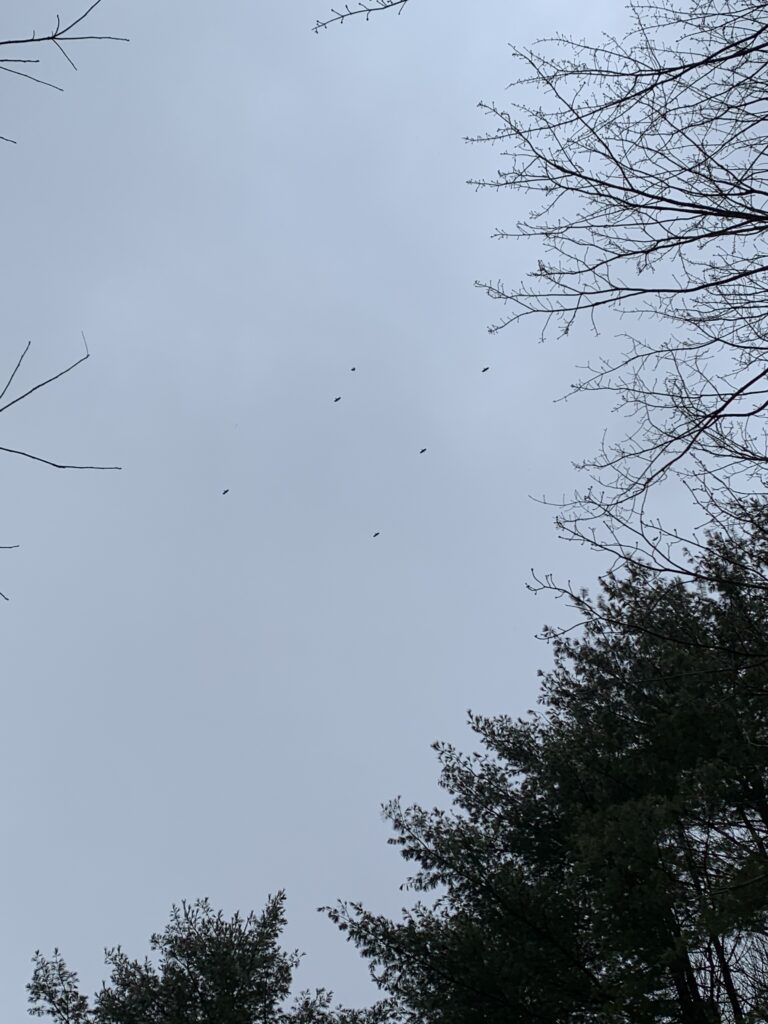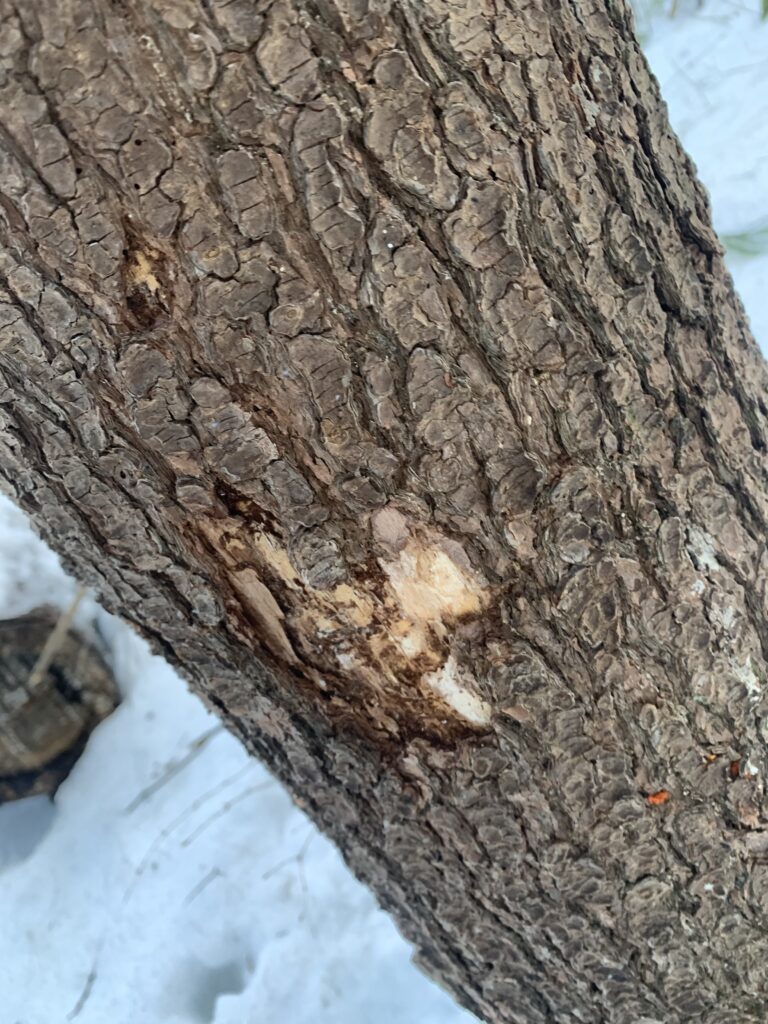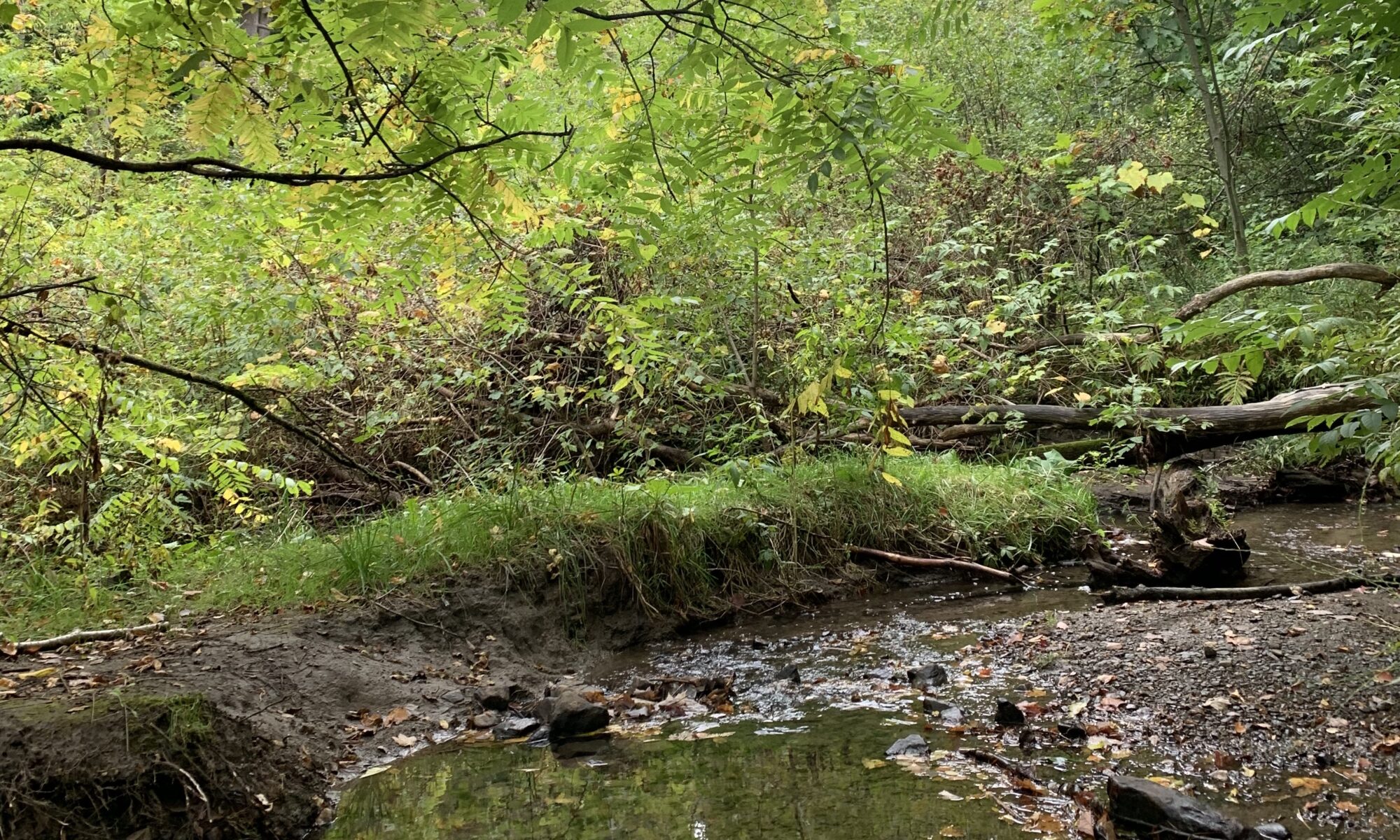Wildlife Activity:
Usually when visiting my phenology site, there is very little animal activity. Typically I find dog prints and human footprints. Despite the cold weather, there is still a ton of human activity in Centennial Woods. When visiting my phenology site this week, I was greeted by a nice surprise. A murder of crows flew over my head as I sat by the Centennial brook. Usually crows (Corvus) inhabit open areas such as pastures and and fields used for farming. Typically crow populations peak around Christmas time, and then return to their breeding grounds in February (Lancaster County Crow Coalition, 2020). Their nesting place is usually evergreen trees, but they can nest in deciduous trees if there are no evergreens available (American Crow Life History). Crows are omnivores, meaning they eat everything from fruit to mammals to small insects. Crows are also responsible for eating road kill, which helps to prevent the spread of disease. I was able to identify the group of birds as crows because of their tail length and that when a crow flies it flaps its wings multiple times and does not glide as much. Also compared to ravens, crows fly in larger groups (Lancaster County Crow Coalition, 2020).

There were also signs of other animal activity. I noticed some bark removed from a tree. This could be from a white tailed deer. During the winter months, deer result to eating tree bank.

In Centennial along the bank of the brook, there are many rocks. Usually under these rocks live chipmunks and other small mammals that burrow under the ground (Chipmunk Facts, 2020). These animals are normally preyed upon by crows. Crows also enjoy eating nuts. A nut bearing tree that is common in Centennial is the oak tree. Therefore, crows are very common in Centennial woods because of the food and nesting area the woods offers.

Phenological Changes:
Since last visiting my phenology site, it has changed slightly. There is no longer green moss on the tree that hangs over the brook. Also half of the brook now has ice over it due to the cold temperatures lately. The water level has risen which has caused the bank of the brook to become more eroded. There is still no signs of life in the brook. Centennial is very quiet since it is winter, there is minimal animal activity.

Citations:
The Lancaster County Crow Coalition. (n.d.). Retrieved February 28, 2020, from https://www.lancastercrows.org/crows.html
Facts About Chipmunks: Chipmunk Facts: Havahart US. (n.d.). Retrieved February 28, 2020, from http://www.havahart.com/chipmunk-facts
American Crow Life History, All About Birds, Cornell Lab of Ornithology. (n.d.). Retrieved March 27, 2020, from https://www.allaboutbirds.org/guide/American_Crow/lifehistory

